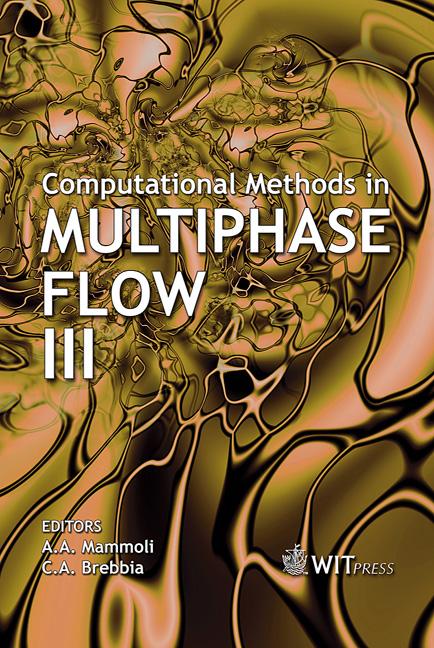Modeling Multi-phase Flow Using CFD With Related Applications
Price
Free (open access)
Transaction
Volume
50
Pages
11
Published
2005
Size
1,281 kb
Paper DOI
10.2495/MPF050231
Copyright
WIT Press
Author(s)
D. Lin, P. Diwakar, V. Mehrotra, B. Rosendall & J. Berkoe
Abstract
Concurrent liquid-gas flow manifests itself into different flow regimes depending on fluid properties, flow rates, heat inputs and geometry. The Baker chart has identified at least seven flow regimes, viz. stratified, wavy, plug, slug, annular, dispersed and bubbly flow. Each flow regime exhibits a unique flow pattern and may transition from one to another depending on the flow conditions in the pipe. Computational Fluid Dynamics (CFD) with multiphase flow equations add a capability by which these flow regimes can be visualized and understood. In this paper stratified and slug flow regimes are studied by using CFD modeling. The modeling results are validated by comparison with published experimental data. The benchmark comparison shows that CFD is successful in predicting the following aspects in two-phase flow: • Quantitative prediction of stream-wise velocities in both phases. • Qualitative prediction of flow regime, phase distribution and pressure distribution. • Transition between certain, but not all, flow regimes. On the other hand, more research and development is needed to accurately predict pressure drop and vapor/liquid interface location when the velocity difference between phases is relatively large. The application of the validated CFD model is extended to the same flow regime in a tee joint distributor system. The results demonstrate that the mal-distribution of flow can occur in complex piping systems with sudden transition. Keywords: validation, transition, stratified flow, slug flow, CFD. 1 Introduction Two-phase flow is a challenging problem because the interaction of liquid and vapor phase can generate different flow patterns depending on properties of the
Keywords
validation, transition, stratified flow, slug flow, CFD.





